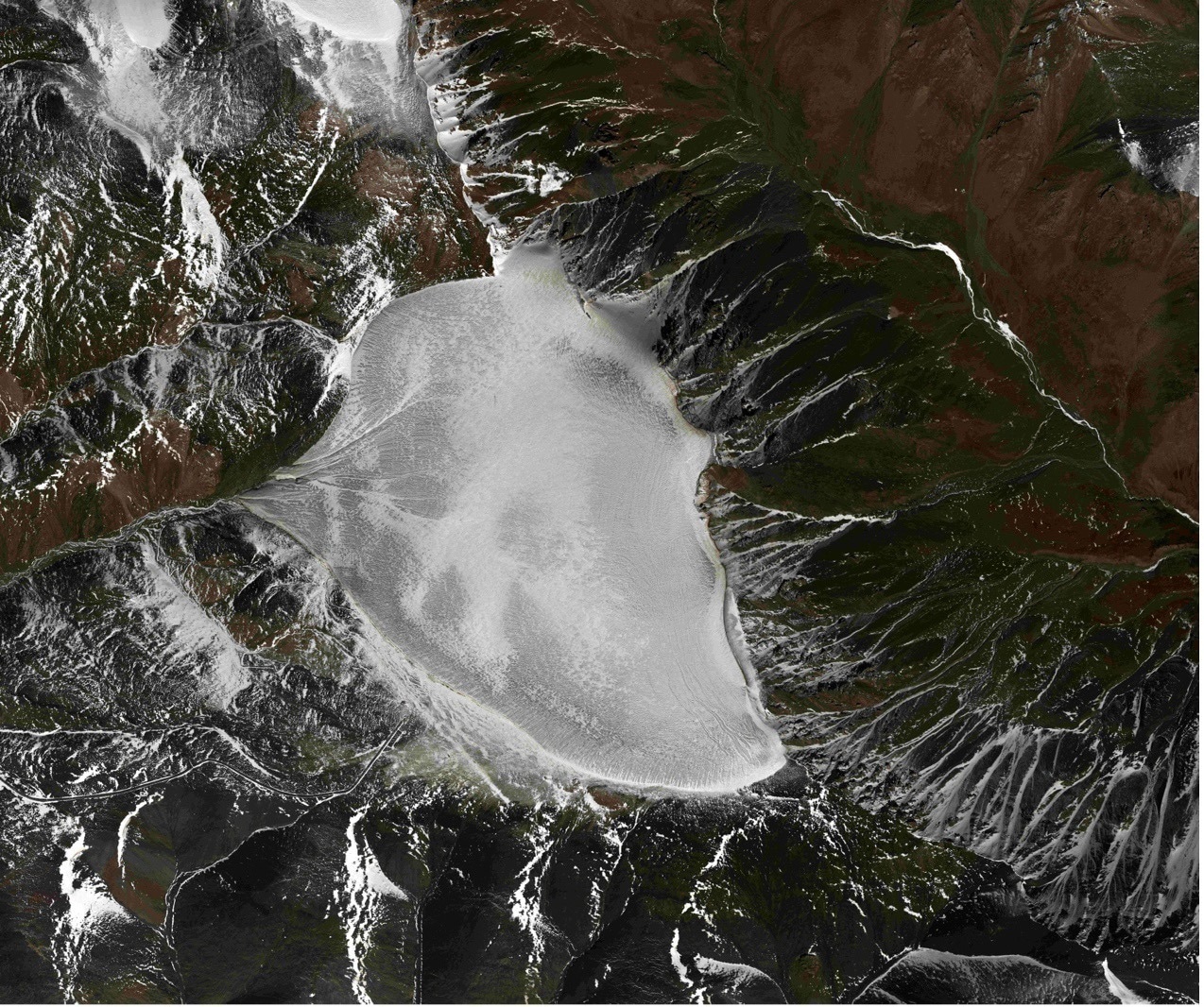According to the Aerospace Information Research Institute (AIR), Chinese Academy of Sciences (CAS), Chinese scientists have successfully acquired mountain glacier data. The data was obtained using an aeronautic remote sensing system during an ongoing airborne-ground science experiment on determining the condition of Bayi Glacier in Haibei Tibetan Autonomous Prefecture, northwest China’s Qinghai Province.
 Digital orthophoto map of the Bayi Glacier. Image Credit: AIR
Digital orthophoto map of the Bayi Glacier. Image Credit: AIR
An airborne platform was used for the first time to undertake a combination of P-band, L-band, and VHF-band radar glacier detection investigation.
The experiment was carried out in collaboration with the Institute of Tibetan Plateau Research, the Aerospace Information Research Institute, the Northwest Institute of Eco-Environment and Resources, and the Innovation Academy for Precision Measurement Science and Technology, all of which are affiliated with the Chinese Academy of Sciences, and Wuhan University.
It began on March 20th, 2023, and is expected to expire in the middle of May. The airborne remote sensing system has so far undertaken 11 flights, of which 7 were for P/L-band tomographic and interferometric imaging and 4 were for VHF-band fluoroscopic imaging, yielding 4.6 TB of useful data.
The researchers performed ground-penetrating radar glacier thickness measurements, ultra-long-range 3D laser point cloud imaging, simultaneous optical and LiDAR observations of the ice surface, onboard instrument calibration of the ice surface, and ground-penetrating radar glacier thickness measurements.
An initial examination of the data revealed that the 3D reconstruction findings of the P-band and L-band synthetic aperture radar (SAR) images might reflect the varying trend of glacier surface elevation, which is essentially compatible with the results of the aerial 3D LiDAR and ground survey.
The VHF data gave a distinct glacier profile that could be used to reflect the interface line of the atmosphere, ice surface, and bedrock, as well as the electrical anomalies that had been intentionally positioned and were found at a depth of 80 m in the ice core borehole.
The depth of the profile interpretation was essentially in line with the outcomes from ground-sounding.
The early findings demonstrated that the experiment had proven the viability of the joint P/L/VHF bands experiment, collected reliable data, and validated the complete observation approach of glacier characteristics.
The National Tibetan Plateau Science Data Center will continue to release and share the experiment’s data to encourage the development of remote sensing inversion techniques for determining the thickness and internal structure of glaciers.
The VHF band airborne radar on board is China’s first domestic aerial glacier detection payload independently built by AIR, according to Prof. Yirong Wu, director-general of AIR.
It is also the first time a domestic remote sensing aircraft has flown above 4,500 meters in the mountain region.
Yirong Wu, Director General, Aerospace Information Research Institute
This experiment marked the advancement of the next-generation cryosphere remote sensing technology by demonstrating the capacity to monitor glacier thickness and calculate ice reserve using aerial remote sensing.
In July 2021, AIR, as the system’s host, formally launched the aeronautic remote sensing system.
With the most complete aerial remote sensing platform and scientific experiment platform in China, it has performed a wide range of scientific research tasks, including large-scale aviation remote sensing comprehensive scientific experiments, new remote sensing payload calibration, and disaster and environmental monitoring, and has gathered a significant amount of useful scientific data.
Source: https://english.cas.cn/